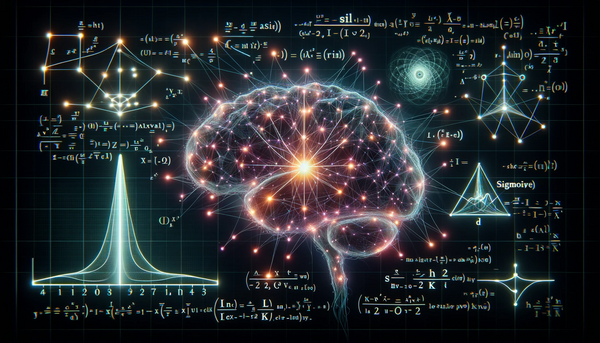The Matrix: Transforming Data and Understanding Neural Networks
Introduction
In today's digitally driven world, you've probably heard terms like machine learning and artificial intelligence. But have you ever wondered what's behind these technologies? The answer is mathematics—specifically, matrices and vectors. This article will explain some fundamental concepts and their real-world applications in an easy-to-understand way.
Multiplying a Matrix by a Vector
What It Means
Imagine a matrix as a magical wardrobe that can transform your outfit completely. If you walk in wearing casual clothes, you might walk out in formal attire. In a similar way, a matrix transforms a vector by stretching, shrinking, or rotating it.
Real-World Example
Consider a video game character with initial coordinates (x,y). A matrix can be used to rotate this character. So, if the character starts at (2,3)(2,3), a rotation matrix can change these coordinates to, say, (3,−2)(3,−2), effectively rotating the character within the game world.
Matrices as Linear Transformations
What It Means
If a matrix is a magical wardrobe, then the "linear transformation" is the set of instructions or the spell that makes the transformation happen. It precisely defines how to change the vector.
Real-World Example
Think of photo editing software like Photoshop. When you apply a filter to an image, the software uses matrices as sets of instructions to transform the color, brightness, and contrast of each pixel in the image.
Linear Transformations as Matrices
What It Means
Just as every spell can be written down, every linear transformation can be converted into a matrix. You can turn any set of vector-changing rules into a matrix, making it easier to apply these rules repeatedly or combine them with others.
Real-World Example
Consider Google Maps adjusting its layout when you switch from map view to satellite view. This transformation can be represented by a matrix, allowing developers to easily implement and modify these changes.
Matrix Multiplication
What It Means
Combining two matrices through multiplication is like merging two sets of instructions into a new, single set.
Real-World Example
In economics, you may want to apply multiple factors like inflation and exchange rates to the cost of goods. By multiplying the matrix representing inflation by the matrix representing exchange rates, you get a new matrix that considers both factors simultaneously.
For those who aren't aware of these terms
Inflation
Inflation is the rate at which the general level of prices for goods and services rises, eroding purchasing power. In simple terms, when inflation is high, each dollar you own buys a smaller percentage of a good or service.
Exchange Rate
The exchange rate is the value of one currency for the conversion to another. For example, if you're importing goods from another country, the cost in your local currency will depend on the exchange rate.
Imagine an international supermarket chain that imports these goods from another country. They would be interested in knowing how both inflation and exchange rates affect the cost of goods. By combining these two factors into one matrix, they can easily calculate the new prices, helping them make informed decisions on pricing, stocking, and promotions.
Combined Matrix (C)=I×E
The Identity Matrix
What It Means
An identity matrix is like your reflection in a mirror—exactly the same as you. When a vector is multiplied by an identity matrix, it remains unchanged.
Real-World Example
Imagine a pricing model for a shop that multiplies prices by 1 (the identity factor) during off-season, effectively keeping them the same.
Matrix Inverse
What It Means
An inverse matrix can undo the effects of another matrix, much like a magical "undo" button.
Real-World Example
In crime scene investigations, if an image is distorted, an inverse matrix can be used to revert the image back to its original state for better recognition.
Which Matrices Have an Inverse?
What It Means
Not all matrices have an inverse. For a matrix to have an inverse, it must meet certain conditions, like not compressing all vectors into a lower-dimensional space.
Real-World Example
Imagine a fruit press that completely squashes fruit into a flat pulp. This transformation can't be undone, similar to how some matrices don't have an inverse.
Neural Networks and Matrices
What It Means
In neural networks, matrices are the magic sauce. They help transform the input data (like a photo) into an output (like identifying the object in the photo).
Real-World Example
When you upload a photo to Facebook, a neural network uses matrices to identify and suggest tags for the faces in the photo. Each layer of the neural network involves matrix operations to refine its understanding of the image.
Conclusion
Congratulations, you've just navigated through the fascinating world of matrices and vectors in machine learning! These mathematical tools are the unsung heroes behind many of the technologies that make our lives easier and more enjoyable. From gaming and image editing to complex neural networks, matrices are everywhere, quietly shaping the world around us.




